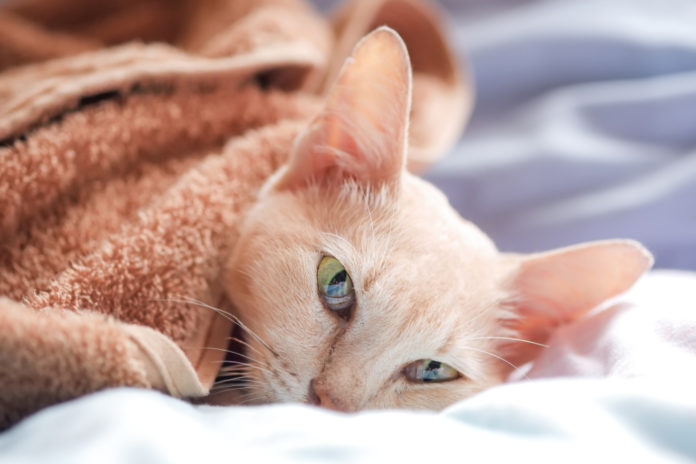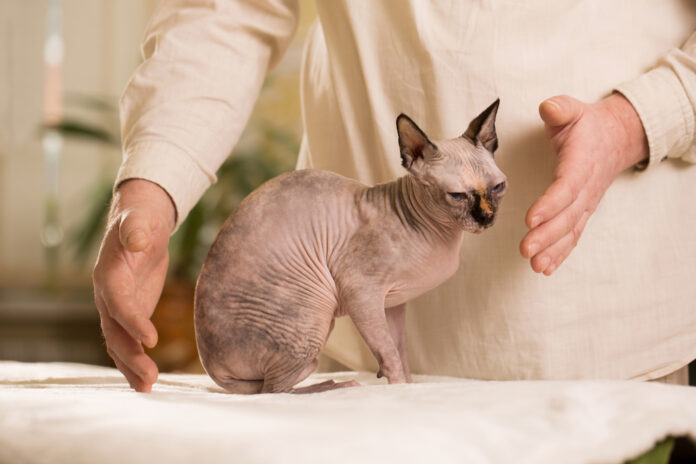Seizures in cats: what pet parents need to know

Seizures in cats can be scary – especially if you don’t know what they are or why they happen. Here’s some basic info that’ll help you deal with a fit if it occurs.
Seeing a cat have a seizure can be a truly distressing experience, especially if this is the first time. Below are a few things you need to know about seizures or “fits”, their causes, and what you should do if one occurs.
What do seizures look like?
A classic (generalized) seizure involves:
- a loss of consciousness
- falling down with the body stiff or arched, legs rigid and paddling
- salivating, often foaming at the mouth
- sometimes loss of bowel or bladder control
A partial (focal) seizure might include:
- consciousness but unaware of you and not responsive
- often a one-sidedness to the signs
- twitching or flickering of an eyelid, a cheek, or an ear
- a mad dash, tail-chasing, or sudden aggression
How long do they last?
Seizures last one to three minutes, no more. They may happen individually, without another one for months, or they might run in clusters of two or more in a day. In status epilepticus, a series of fits continue for more than five to ten minutes.
Afterward, in the post-ictal phase, your pet may behave differently, or be wobbly or confused.
What should I do if my cat has a seizure?
During the seizure, do your best to stay calm, quiet, and watchful. Video the episode if you can – it’s hugely helpful for your veterinarian – and note how long it lasts. Remove anything the cat could hurt himself on and, if you must move him for his safety, protect yourself by gathering him up in a blanket.
Whether or not your cat should be seen by your vet depends on the circumstances. Let your cat recover quietly without further stress and schedule a full check-up in the near future if only one seizure occurs, if you haven’t recently applied anything (such as flea and tick medication) to him, and if he has otherwise been behaving normally with no signs of ill-health.
Call your vet as a matter of urgency if your cat has more than one seizure in a day, displays other signs of illness, or may have been in contact with something toxic. Write down what you have seen, retrieve the packaging of any treatment, and take these to your appointment.
Does my cat have epilepsy?
True epilepsy, which vets call Idiopathic Epilepsy, often starts when the cat is a young adult. It is diagnosed when no cause for the fits can be found. Having some knowledge of other possible causes and how they are grouped – shown below with some examples – will help you to understand your veterinarian’s diagnosis. In many of these cases, there will be other signs of illness aside from the fits themselves.
Toxins, diet, and medications
Some causes stem from outside the cat: toxins such as permethrin or isoxazolines in flea treatments, a dietary deficiency linked to raw fish, or an insulin overdose in a diabetic cat. Giving your vet a careful history can rule out – or point to – these concerns.
Organ problems
Internal causes that aren’t neurological include liver disease, low blood sugar, or polycythemia (a thickening of the blood). Infections of some viruses or the parasite Toxoplasma can also develop into seizures. Diagnosis of these extra-cranial causes generally begins with a full physical exam and appropriate blood tests.
Problems with the brain
Problems within the brain itself are termed intracranial. The biggest concern is a tumor or neoplasm inside the skull. Sadly, this is a possibility, especially if your cat is over ten, when years of age. MRI or CT imaging will help your vet to make a diagnosis.
If all of the above are ruled out, then the diagnosis of idiopathic epilepsy may be made. If the fits occur often, it’s time to discuss treatment options with your vet.
What triggers a seizure?
In true epilepsy, the trigger is often unknown, but there is an interesting exception to that. Certain noises can trigger a variety of seizures, from generalized fits to short-acting twitches, or just a dazed moment. Correctly called FARS and more common in older cats, deaf cats, or Birmans, it’s been dubbed ‘Tom and Jerry Syndrome’, referring to Tom’s startled reactions to trouble!
Can flea products cause seizures in cats?
Most flea products designed for cats are safe and side effects are rare. Most problems happen when dog products containing permethrin are applied to cats, or cats rub up to recently treated dogs. Seizures have also been reported with more modern flea treatments containing isoxazolines like fluralaner. If your cat has a seizure and you’ve applied one of these products in the last 12 hours, call your veterinarian immediately.
Seizures affect at least one in 50 cats, with some studies suggesting it’s closer to one in ten. If your cat has a seizure, it’s important to remain calm and time the seizure, then call your vet once he has recovered. If he doesn’t recover within three to four minutes, call your vet immediately for advice. Your vet will help you to work through the possible causes to determine the best course of action.




